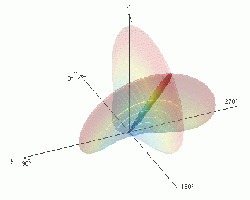
August 5, 2010 — New tools are enabling physicians at the Proton Therapy Center at The University of Texas MD Anderson Cancer to harness supercharged proton particles and conform them more precisely to the rugged landscape and uneven contours of a tumor. Using a technology known as pencil beam scanning or spot scanning, protons are given the mission to hone in on cancer cells and destroy them.
As much an art form as a war tactic, pencil beam proton therapy has the ability to treat the most complex of tumors, like those of the prostate, brain, base of the skull and eye, while leaving healthy tissue and critical structures virtually untouched. This is achieved by using proton particles, accelerated to nearly the speed of light, to mimic the shape of a tumor and effectively deposit their energy within the confines of it with sub-millimeter precision.
In nearly a decade since pencil beam's birth in a Swiss physics institute, the practitioners in radiation science at MD Anderson's Proton Therapy Center have integrated the tested technology into the institution's multidisciplinary approach to patient care and translational cancer research.
A New Frontier for Proton Therapy
Most proton patients are treated with a technique known as passive scattering, which uses apertures to shape the proton beam and deliver a uniform dose to the tumor. Since opening in the spring of 2006, MD Anderson's Proton Therapy Center has treated nearly 1,700 patients with this passive scattering technique.
The technology continues to build on the patient benefits already offered with proton therapy – more targeted, higher tumor dose, shorter treatment times, reduced side effects and increased treatment options – to treat complicated tumors perilously close to critical structures, such as the eye, brain and esophagus.
"The difference between passive scattering and pencil beam is like painting something with a can of spray paint versus using an airbrush," said Andrew Lee, M.D., M.P.H., associate professor in the Department of Radiation Oncology at MD Anderson, and the director of the Proton Therapy Center. "Pencil beam is more like a very fine airbrush. Instead of needing a brass template to define the shape, the proton beam is made ultra fine to conform to the contours and landscape of a tumor. When all these small beams are combined, they can cover the entire tumor volume with a high degree of conformality. If the tumor is shaped like an egg, then the proton dose will look like an egg."
For more information: www.mdanderson.org/proton


 November 04, 2025
November 04, 2025 









